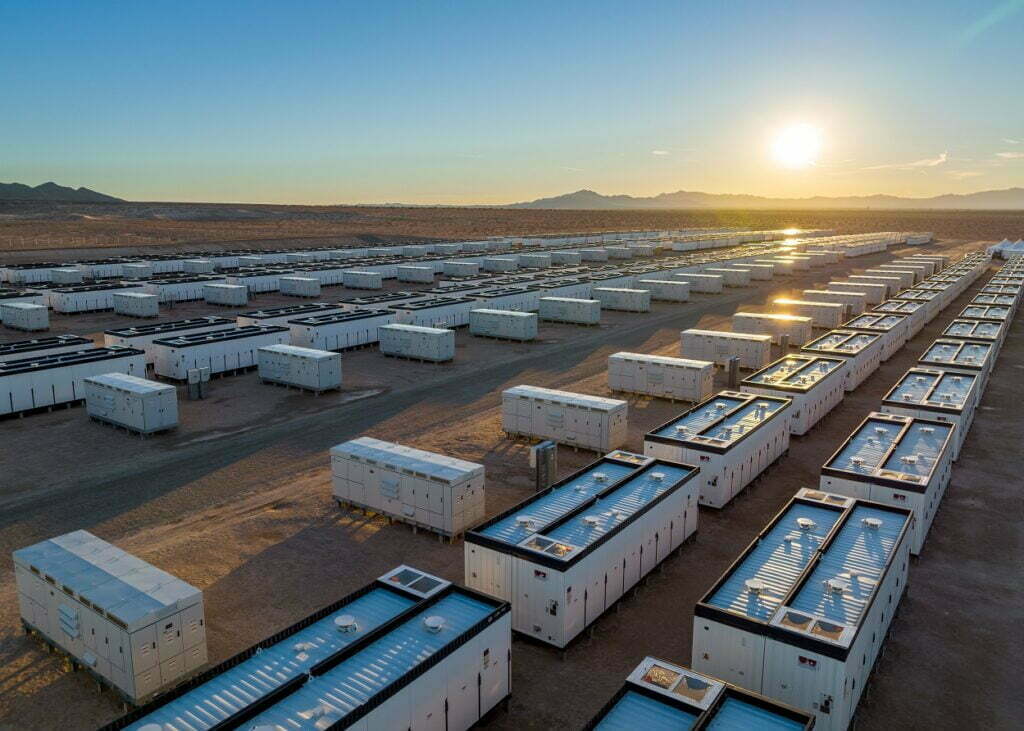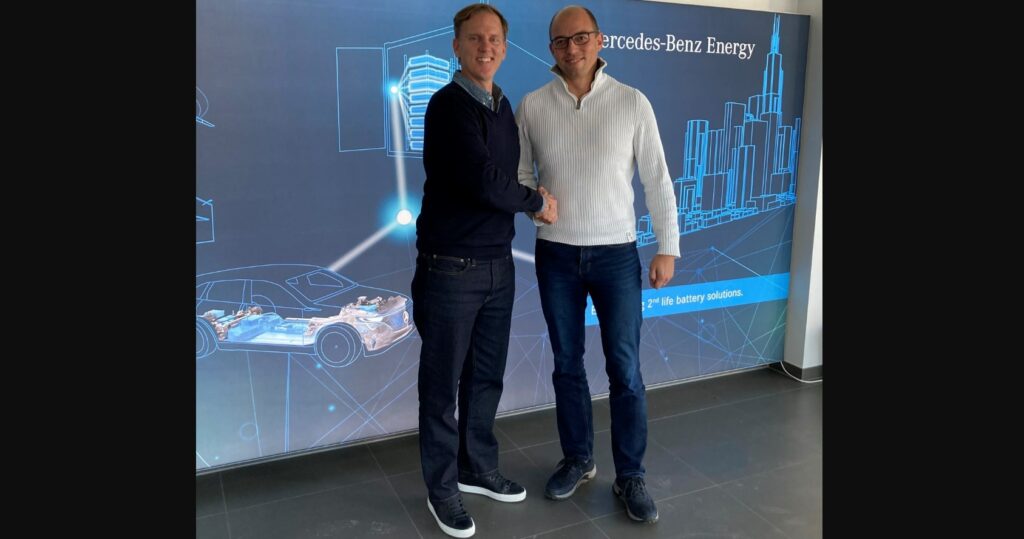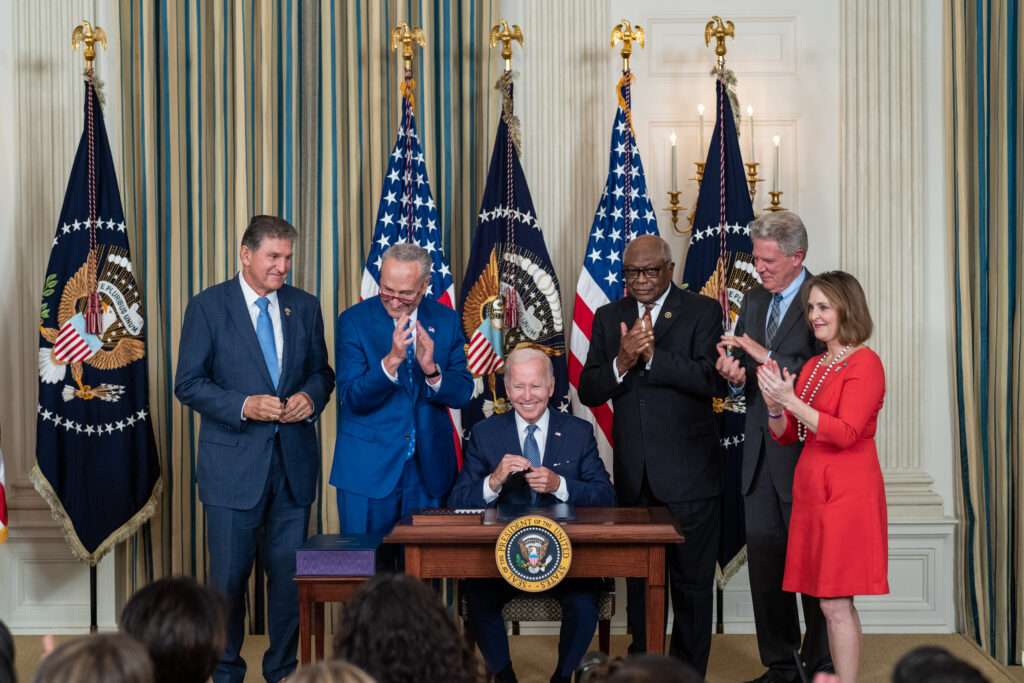An energy storage system that ECO STOR delivered for developers Kyon Energy and financier Obton. Image: ECO STOR / Kyon Energy / Obton.
An evaluation of 2022 and predictions for the coming year from German battery storage developer and system integrator ECO STOR, and UK-based second life energy storage firm Connected Energy.
Last year was a breakout year for the German grid-scale energy storage market and the global second life energy storage market.
While the official numbers are not yet out, it will be clear to regular readers of Energy-Storage.news‘ coverage of the country that Germany most likely beat its best ever year of grid-scale battery storage deployments of 200MW (back in 2018). A growing comfort with the asset class for investors is one of the main reasons cited by Georg Gallmetzer, director of ECO STOR which deployed over 100MWh last year.
For second life energy storage, the practice of taking used battery modules from EVs and repurposing them into stationary systems, 2022 was also something of a breakout year but for altogether different reasons (although clearly it is riding the coattails of the booming broader energy storage market).
The sector is reaching something of an inflection point with the supply of battery modules, with several OEMs taking the lead on working with outside companies for second life applications. Severe bottlenecks in the supply of new lithium-ion batteries has also bettered the business case using EV batteries.
Several companies providing solutions deployed their first major systems across Europe and the US last year, while Energy-Storage.news has been told hundreds of MWh have been installed in China. Several companies also completed fundraise rounds in the double-digits, including the UK’s Connected Energy, whose CEO Matthew Lumsden also shared his thoughts on the year gone by and the year ahead.
Georg Gallmetzer, director, ECO STOR
What did 2022 mean for your energy storage business, and how did the year compare with last year?
With the foundation and completion of a strong sales campaign in 2021, 2022 was the year of demonstrating our deployment capabilities and resilience towards supply chain constraints and other risks. In 2022, ECO STOR deployed 27 of its ES-3450 storage systems in 7 projects in Germany totaling 108 MWh. These projects were delivered on time, within budget and full contractual performance, which is extraordinary in the context that the world did everything to prevent it. The market circumstances have improved in 2022 despite material price increases and material delivery constraints. In 2022 battery storage has become part of security infrastructure in the context of the Ukraine war and gas shortage in the European power markets.
What were some of the biggest gains and steps forward made by the industry, including your company, during the last 12 months?
According to the MaStR registry in 2022 about the same volume of >1MW battery storage systems were deployed in Germany compared to the cumulative volume of all years before, see Battery Storages Germany (eco-stor.de). So 2022 was the year of regaining dynamic growth in the grid battery storage segment after a few years of slow market development.
Also the battery storage business models were increasingly adapted to more challenging market opportunities like trading / load shift applications that allow very large volumes to be added to the market in comparison to the rather small auxiliary markets (FCR, aFRR, etc.) but require a different technological setup.
In 2022 in Germany we observed a diversification of players in the field of equity & debt financing, project development and engineering, procurement and construction (EPC). Germany in 2022 made large steps towards a liquid and mature market.
The industry faced some well-documented challenges during the year, with the highest profile being supply chain constraints. How have those challenges affected the industry and how should they be confronted?
The challenges in the supply chain may be confronted with alignment of risks and chances along all players in the value chain of a large scale project. If battery manufacturers want material index pricing, this risk and chance shall be shared on a fair basis among all players, including developer, EPC, equity and debt financing actors.
At the same time, the industry faced an unseen rise in the financial opportunity for battery deployment that in my view overcompensates the downsides of material shortage and price risks. These upsides for investors have, to my notion, widely not been shared with developers and EPC’s.
So my suggestion is, to have both ends of the business case (increased risk, increased opportunity) well under observation and allocate both ends symmetrically to the whole value chain of the industry.
Which technology and industry trends would you recommend our readers keep a close eye on in 2023?
In our market and technology data driven business development we see a bank case for asset investments with regard to short term trading / load shift operation. But this has a strong impact on the design/layout with regard to the robustness of battery systems. Low demand / low cost oriented battery systems may be disqualified from participation in these market applications. The industry should keep a close eye on matching the battery platform stress resilience towards the mix of applications during the project lifetime.
What are the biggest priorities for your company, and for the wider industry, in 2023 and beyond?
With the tailwind of the strong deployments of our organisation in 2022 we want to keep up with the momentum and scale project sizes to 100MW and beyond. This makes sense because it maximises the efficiency in the value chain. It is not only material delivery constraints but also the availability of qualified teams that limits the market growth in Germany. ECO STOR and the industry is required to deploy much higher volumes in the coming years in order to deliver on the increased demand. We answer to this demand with a focus on scaling the project volumes to 100MW+.
Matthew Lumsden, CEO, Connected Energy
What did 2022 mean for your energy storage business, and how did the year compare with last year?
2022 was a significant year in the journey of Connected Energy. The drive for organisations to decarbonise combined with the global instability in the energy market has brought about a surge in interest and demand for behind-the-meter energy storage. This has led to our commercial sales turnover more than quadrupling over the last twelve months.
It was also the year that the company welcomed a £15m investment, from new investors including Caterpillar Venture Capital, Volvo Energy, Mercuria Energy Trading S.A. and OurCrowd.
This additional funding alongside the strategic value of these new parties will make a real contribution to our ability to scale up our business and move into utility scale project development. This will bring huge opportunities to the company in the year ahead.
The year brought a welcome respite from the challenges of 2021. Working through COVID brought many compromises, not least the ability to meet face to face with customers, however, we have seen real signs of recovery this year.
What were some of the biggest gains and steps forward made by the industry, including your company, during the last 12 months?
To see the profile of the circular economy being high on the agenda of Cop27 was a key step forward for the second life battery energy storage industry. We are also seeing a greater understanding of the benefits of second life systems amongst our customers, especially those driven by meeting net zero targets.
There needs to be more emphasis on the reuse philosophy – up until now the emphasis has been on recycling which overlooks the value that second life systems can bring. In the year ahead I hope that we will build on this conversation to see incentives that recognise the negative environmental impact that we are displacing by re-using electric vehicle batteries.
The industry faced some well-documented challenges during the year, with the highest profile being supply chain constraints. How have those challenges affected the industry and how should they be confronted?
The lack of activity during COVID caused manufacturing to come to an abrupt halt and as things ramped up, the industry was simply not ready to meet the renewed demand. This has led to an impact on availability, lead times and price increases for components. Larger manufacturers, able to absorb rising costs, have also led to spot market pricing, which has further exasperated the market.
All these things combined have made it difficult to plan and, with the logistics sector in a volatile state, there are no guarantees of delivery until components physically arrive.
2023 will remain challenging, not least with the war in Ukraine, and we don’t anticipate things will start to improve until the latter half of next year. The only mitigation is careful planning, building relationships, open communications with suppliers and committing to materials as early as possible to manage risk.
Thankfully, due to our second life approach working with Renault in particular, battery availability has been less of a challenge for Connected Energy. However, demand for batteries has led to a detrimental impact on the price and availability of first life systems and this cannot be good for the sector.
A Connected Energy project in Belgium, with repurposed Renault EV batteries. Image: Connected Energy.
Which technology and industry trends would you recommend our readers keep a close eye on in 2023?
The energy storage market is maturing at pace and there is a growing recognition of the range of technologies that can benefit different applications. We are beginning to see emerging technologies finding their niche, for example, longer duration non-lithium ion systems which are suited more to energy shifting and gravity-based energy storage systems. This demonstrates that the market is maturing and illustrates the different values of the new technologies coming onto the market, a trend to watch.
What are the biggest priorities for your company, and for the wider industry, in 2023 and beyond?
For us, the priority is to continue to scale up our business and systems to meet the growing availability of second life batteries and to capitalise on the market opportunity that brings.
Recent events in the energy market have placed a real focus on energy resilience. We are now seeing interest from commercial and industrial customers who are focussed on de-risking supply and moving towards self-sufficiency, as well as a low carbon energy supply. Localised energy systems are a good route to both and now that many new technologies are maturing, their co-location and optimisation will create a level of sophistication that our new energy systems require.
The recognition of the role that energy storage can play must be a priority for the industry as a whole.
Energy-Storage.news’ publisher Solar Media will host the 8th annual Energy Storage Summit EU in London, 22-23 February 2023. This year it is moving to a larger venue, bringing together Europe’s leading investors, policymakers, developers, utilities, energy buyers and service providers all in one place. Visit the official site for more info.
Continue reading











